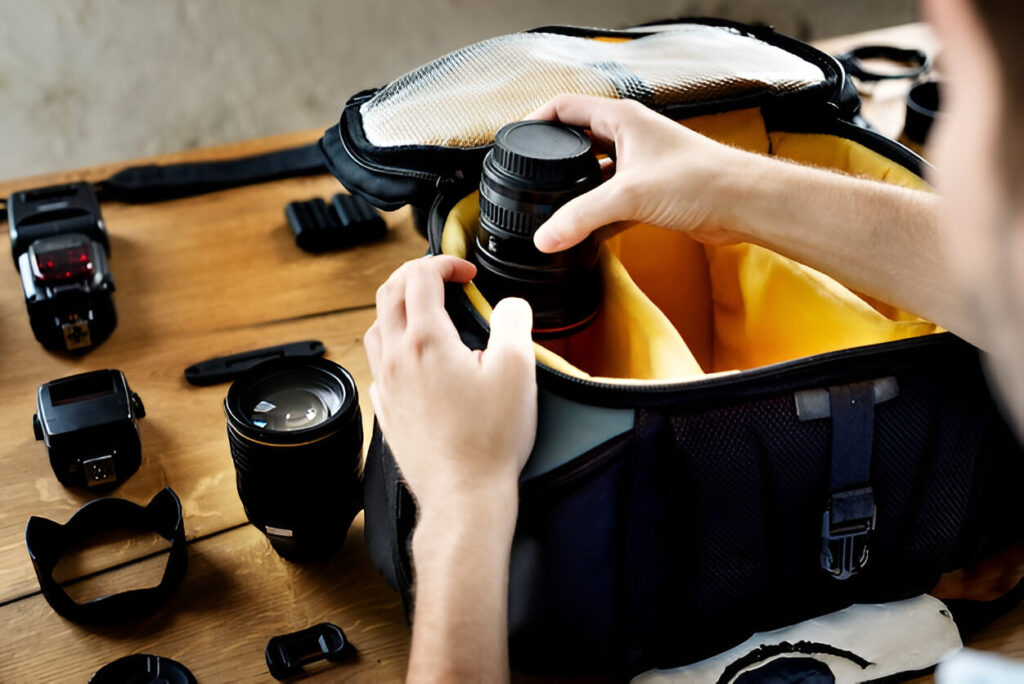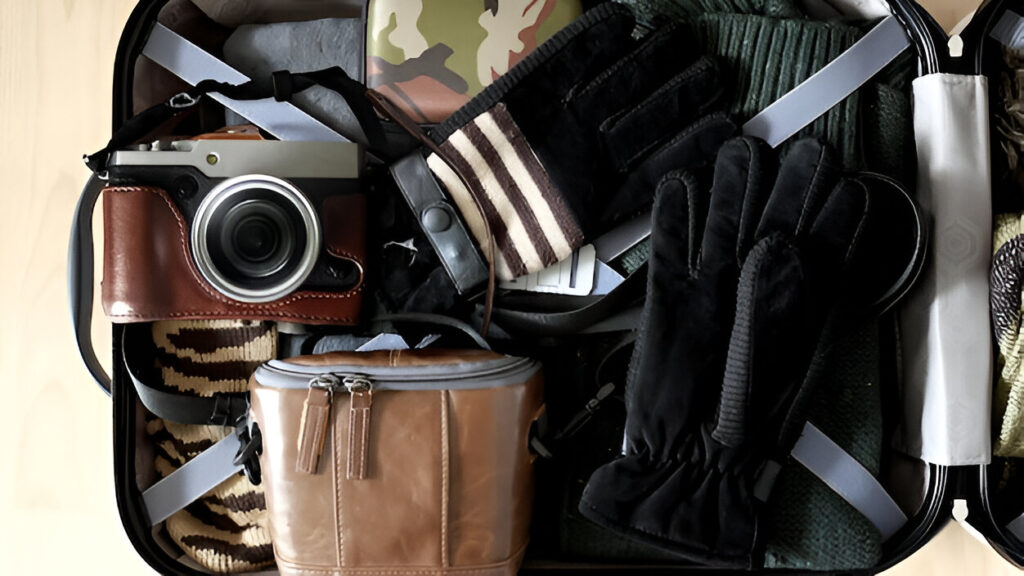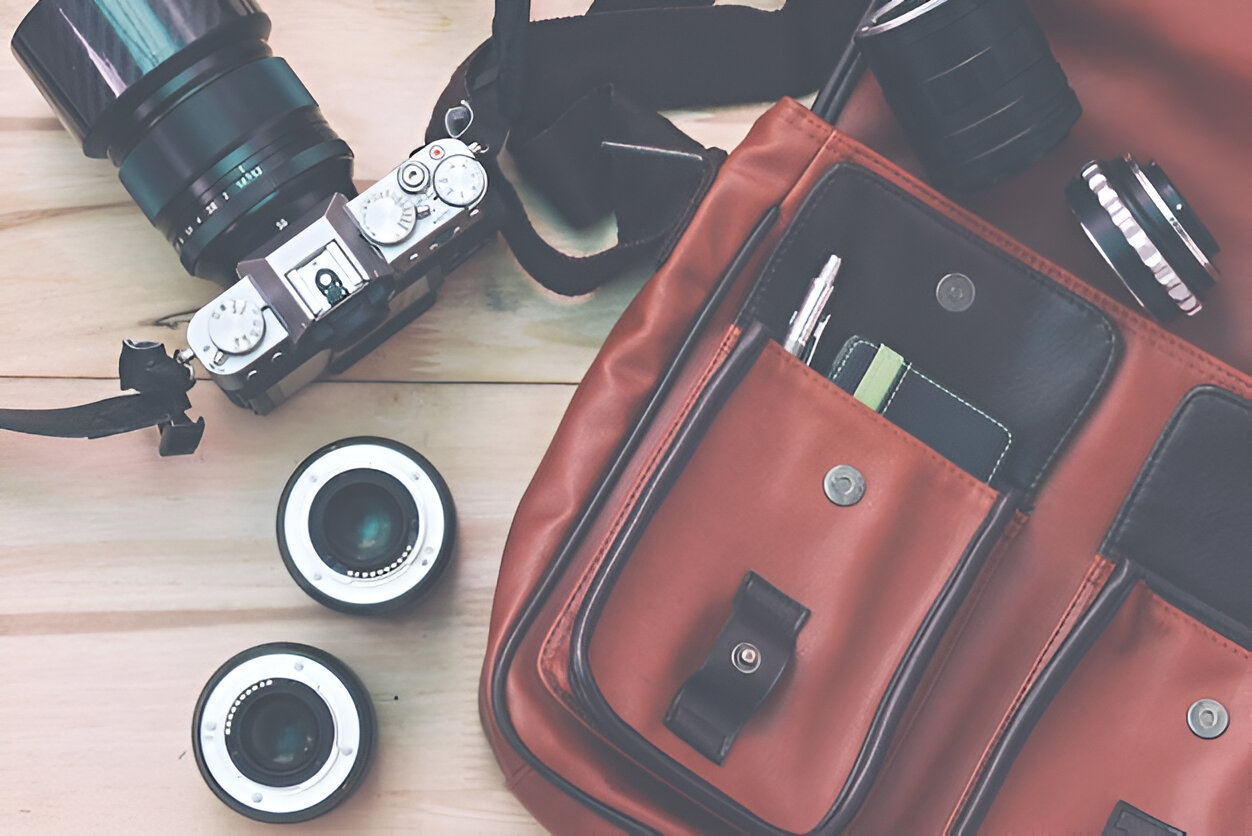Traveling with your camera gear requires careful planning to ensure your expensive equipment stays safe and secure. Whether you’re a professional photographer or an enthusiastic hobbyist, investing in a high-quality travel case for camera is essential. A well-designed camera case protects your gear from dust, moisture, shocks, and accidental drops while making it easier to carry everything you need.
In this comprehensive guide, we’ll explore everything you need to know about selecting the perfect travel case for camera, including different types, key features to consider, and top recommendations. By the end of this article, you’ll be well-equipped to choose the best case for your photography adventures. To buy visit here :

A travel case for camera gear is an essential investment for photographers who want to protect their equipment while on the move. Whether you’re a professional capturing stunning landscapes or an enthusiast documenting your adventures, the right camera case ensures your gear remains safe, organized, and ready for action.
Why You Need a Travel Case for Camera Gear
Traveling exposes your camera equipment to various risks, including physical damage, weather conditions, and theft. A dedicated travel case for camera gear offers:
- Protection: Padded interiors and sturdy exteriors safeguard against shocks and impacts.
- Organization: Customizable compartments keep your gear neatly arranged.
- Convenience: Easy access to equipment allows for quick setup and shooting.
- Security: Lockable zippers and discreet designs deter theft.
Types of Travel Cases for Camera Gear
1. Backpacks
Ideal for hikers and urban explorers, camera backpacks distribute weight evenly and often include compartments for laptops and personal items.
2. Shoulder Bags
These offer quick access to gear and are suitable for street photography or events where mobility is key.
3. Hard Cases
For maximum protection, hard cases are waterproof, dustproof, and crush-resistant, making them perfect for air travel and harsh environments.
4. Rolling Cases
Equipped with wheels, these cases are excellent for transporting heavy gear through airports or studios.
Features to Consider When Choosing a Travel Case for Camera Gear
1. Size and Capacity
Ensure the case accommodates your camera body, lenses, and accessories without being overly bulky.
2. Material and Durability
Look for water-resistant fabrics or hard-shell materials that can withstand rough handling and weather conditions.
3. Interior Customization
Adjustable dividers allow you to tailor the interior layout to fit your specific gear.
4. Security Features
Lockable zippers and hidden compartments add an extra layer of protection against theft.
5. Comfort
Padded straps and ergonomic designs reduce strain during long periods of carrying.
Top Travel Cases for Camera Gear
1. Pelican 1510 Protector Case
A favorite among professionals, this hard case is waterproof, crushproof, and features customizable foam inserts.
2. Lowepro ProTactic BP 450 AW II
This versatile backpack offers multiple access points, a robust build, and modular accessories for personalized setups.
3. Think Tank Photo Airport Advantage
Designed for air travel, this rolling case fits in overhead compartments and provides ample space for gear.
4. Peak Design Everyday Backpack
Combining style and functionality, this backpack features weatherproof materials and customizable dividers.
5. Billingham Hadley Pro
A stylish shoulder bag made from water-resistant canvas and leather, offering discreet protection for your gear.
Tips for Traveling with Camera Gear
- Carry-On: Always keep your camera gear in your carry-on luggage to prevent damage or loss.
- Insurance: Consider insuring your equipment against theft or damage.
- Backup: Bring extra batteries and memory cards to avoid running out of power or storage.
- Maintenance: Pack cleaning supplies to keep your gear in optimal condition.
Specialized Travel Cases for Different Types of Camera Gear
Not all camera setups are the same. Depending on what kind of camera you use and how much gear you carry, the travel case for camera that suits your needs might vary greatly. Below are some examples:
1. Travel Case for DSLR Cameras
DSLR cameras are typically larger and heavier than mirrorless or compact models. They often come with multiple lenses, flashes, and accessories. A good travel case for camera gear that includes a DSLR should have reinforced padding, multiple compartments, and shockproof lining.
Recommended Features:
- Sturdy dividers for body and lenses
- External tripod holder
- Rain cover for additional protection
2. Travel Case for Mirrorless Cameras
Mirrorless cameras are generally more compact but can still require serious protection, especially for travel photography. A lightweight yet secure travel case for camera gear will suit mirrorless users well.
Look for:
- Slim-profile cases with customizable interiors
- Space for multiple lenses and chargers
- Cross-body strap or sling for quick access
3. Travel Case for Action Cameras (e.g., GoPro)
Action cameras may be small, but they often come with many attachments and accessories. A travel case for camera used for GoPro-style setups should include slots and pouches for mounts, batteries, and waterproof housing.
Key Features:
- Hard exterior shell
- Foam inserts to hold small items in place
- Waterproof and dustproof
Organizational Tips for Packing a Travel Case for Camera
Even the best travel case for camera equipment won’t be helpful if it’s packed poorly. Organizing your camera gear strategically not only saves space but also ensures quick access when you’re in a hurry to catch that perfect shot.
1. Group Items by Use
Separate items into categories like lenses, power (batteries/chargers), memory (SD cards/hard drives), and maintenance (cloths, blowers). Place frequently used items in easy-to-access compartments.
2. Use Labels or Color Coding
For professionals or those carrying a lot of equipment, label compartments or use color-coded pouches to differentiate items. This is particularly useful for fast-paced shooting environments.
3. Minimize Loose Items
Loose accessories can scratch your lenses or camera screens. Use zippered pouches or cases within your travel case for camera to keep small items organized and secure.
Airline and Travel Regulations for Camera Cases
When choosing a travel case for camera, especially for air travel, it’s important to comply with airline baggage rules and international travel regulations. Some useful considerations include:
1. Carry-On Size Compliance
Hard-shell travel cases for camera should ideally fit in an airplane’s overhead bin. Double-check size restrictions for both domestic and international flights, especially for budget airlines.
2. Weight Limits
Many airlines enforce strict weight limits for carry-ons and checked bags. A heavy travel case for camera filled with metal lenses and bodies can quickly exceed these limits, so pack accordingly.
3. Lithium Battery Regulations
Camera batteries are considered hazardous materials. Ensure they are packed in carry-on luggage and are stored in proper cases or sleeves to avoid short circuits.
Weatherproofing Your Travel Case for Camera
Photography in the great outdoors exposes your gear to the elements. The right travel case for camera gear will protect your investment from rain, humidity, dust, and extreme temperatures.
Tips for Weather Protection:
- Waterproof zippers and seams: Keep water out during heavy rain
- Silica gel packs: Absorb moisture and prevent condensation
- Weather-sealed compartments: Protect sensitive electronics
- UV-resistant materials: Avoid damage from prolonged sun exposure
Camera Case Maintenance and Longevity
A travel case for camera is an investment that should last for years. However, like any gear, it requires maintenance.
How to Care for Your Camera Case:
- Clean interiors regularly: Dust and grime can scratch your lenses
- Inspect zippers and fasteners: Ensure they function smoothly
- Air it out: Especially after humid or wet trips to prevent mold
- Check padding: Replace any worn-out foam inserts
DIY Travel Case for Camera: Is It Worth It?
While there are many commercially available options, some photographers consider customizing their own travel case for camera gear. This can be especially useful for unique gear arrangements or budget constraints.
Advantages:
- Full control over the layout and design
- Budget-friendly
- Opportunity to reuse existing luggage or toolboxes
Disadvantages:
- Less protection if not done properly
- Time-consuming
- May lack features like weatherproofing or lockable zippers
If you go this route, ensure you use high-quality foam inserts and a hard outer case, such as a repurposed tool case or suitcase.

Photography Use Cases That Demand a Good Travel Case for Camera
1. Travel Photography
Whether you’re capturing the streets of Paris or the jungles of Costa Rica, your gear needs to stay protected through flights, hikes, and changing climates. A weather-resistant, lockable travel case for camera is a must.
2. Event Photography
Weddings, concerts, or corporate events often require quick mobility and easy access to multiple lenses and flashes. A rolling or shoulder travel case for camera with quick access zippers is ideal.
3. Adventure and Wildlife Photography
Photographers in rugged environments need maximum protection and modular packing. A hard-shell travel case for camera with waterproof seals and foam compartments ensures your gear survives the wild.
Best Practices for Buying a Travel Case for Camera
Before clicking that “Buy Now” button, consider these best practices to ensure you’re getting a reliable product:
1. Read Reviews
Check real user feedback on sites like Amazon, B&H Photo, and photography forums. Look for mentions of durability, interior space, and actual use in travel situations.
2. Test Fit Your Gear
If possible, test the travel case for camera with your gear before committing. Some stores or rental services allow this.
3. Brand Reputation
Stick with brands that are known for producing reliable gear like Pelican, Lowepro, Think Tank, and Peak Design.
4. Warranty and Return Policy
Ensure the case comes with a solid warranty or satisfaction guarantee in case it doesn’t meet your expectations.
Eco-Friendly Travel Cases for Camera
Sustainability matters more than ever, even in photography gear. Some companies are now offering travel case for camera solutions made from recycled or environmentally-friendly materials.
Look For:
- Recycled plastic shells or fabrics
- Non-toxic dyes and adhesives
- Certifications for sustainable manufacturing
Choosing an eco-conscious travel case for camera helps reduce your carbon footprint while keeping your equipment safe.
Frequently Asked Questions (FAQs) About Travel Case for Camera
1. What is the best material for a travel case for camera?
The best material depends on how and where you travel. For rugged travel or flying with your gear, a hard-shell material like polycarbonate or ABS plastic offers superior protection. These materials are:
- Shock-resistant
- Waterproof
- Long-lasting
For everyday or urban use, soft materials like water-resistant nylon or canvas offer better portability and flexibility. A hybrid travel case for camera combining hard and soft elements can be ideal for versatility.
2. Is a backpack better than a rolling travel case for camera gear?
That depends on the kind of travel you’re doing:
- Backpack-Style Cases: Great for hiking, exploring, and locations with uneven terrain. These provide mobility and comfort.
- Rolling Cases: Excellent for airports, studios, and event work where you’re transporting multiple lenses, bodies, and accessories.
If you’re traveling internationally with a lot of gear, consider both options. A backpack for essential, on-the-go items and a rolling case for storage and transport can be a perfect combination.
3. Can I use a regular suitcase as a travel case for camera?
Technically yes, but it’s not ideal unless modified properly. Regular suitcases don’t offer the padded compartments, weather resistance, or security features that a proper travel case for camera does.
If you do convert a suitcase:
- Add customizable foam inserts
- Use individual padded pouches for each item
- Avoid packing gear loosely
For professional or high-value equipment, investing in a dedicated travel case for camera is the safest option.
4. What size travel case for camera should I get?
The size depends on your gear and travel frequency. A few guidelines:
- Minimalist kits: Go for small sling bags or compact backpacks
- Standard DSLR or mirrorless kit: Medium backpacks or shoulder bags with 3–4 lens compartments
- Professional gear (multiple lenses, drone, flashes): Large rolling cases or hard cases with foam inserts
Make sure the case fits in overhead compartments if you plan to carry it on flights. Always measure and check airline size requirements before buying a travel case for camera.
Travel Photography Safety Tips Using Your Travel Case for Camera
Traveling with camera gear brings joy, but it also poses risks if you’re not cautious. Your travel case for camera can play a major role in safety, not just organization.
Safety Tip #1: Don’t Flash Expensive Gear
While your travel case for camera might be stylish, avoid drawing too much attention in unfamiliar or high-theft areas. Choose discreet designs and avoid branded or flashy cases when possible.
Safety Tip #2: Use a Cable Lock
Some travel case for camera designs include loops for cable locks or are lockable with TSA-approved locks. These can secure your case to fixed objects when you’re on the move or in a busy environment.
Safety Tip #3: Carry Only What You Need
Don’t overpack. The more gear you carry, the higher the risk of losing or damaging something. Choose the right travel case for camera to carry only the essentials for that day or trip.
Common Mistakes to Avoid When Choosing a Travel Case for Camera
❌ Buying Based on Looks Alone
A case may look sleek, but it must be functional. Always prioritize features over style. The interior layout, padding, and waterproofing matter more than aesthetics.
❌ Overlooking Future Gear Expansion
If you’re planning to upgrade your camera gear soon, buy a travel case for camera with room for expansion. Otherwise, you’ll end up buying a new case again in a few months.
❌ Ignoring Weather Protection
Even if you don’t plan to shoot in the rain or snow, weather can change quickly. Make sure your travel case for camera has at least some degree of water resistance or includes a rain cover.
❌ Going Cheap on Zippers and Fasteners
Your case is only as secure as its zippers. Cheap zippers are prone to breaking, which can put your gear at risk. Always go for a reputable brand that uses durable components.
Brands That Specialize in Travel Case for Camera
1. Pelican
Known for their ultra-rugged hard cases, Pelican cases are used by professionals worldwide. They are waterproof, dustproof, and crushproof.
2. Lowepro
A well-known brand that offers a range of soft-shell camera bags and travel backpacks, ideal for all types of photography needs.
3. Think Tank
Great for rolling cases, backpacks, and airline-friendly designs, especially suited for travel photographers and journalists.
4. Peak Design
Offers sleek and modern solutions with smart modular storage, ideal for urban and travel photographers alike.
5. Manfrotto
Better known for tripods, but also makes well-built travel case for camera products, especially backpacks and sling bags.
Innovations in Travel Case for Camera Design
Modern travel cases for camera are no longer just padded boxes. Today, they’re built with innovative materials and smart tech to enhance your workflow and travel experience.
Smart Features to Look Out For:
- Built-in USB charging ports
- RFID protection pockets for passports/cards
- Modular dividers for different camera systems
- Anti-theft zippers and slash-proof fabrics
- Memory card organizers with color-coded slots
With photography becoming more integrated with digital tools and travel gear, choosing a smart travel case for camera can simplify your workflow and make shooting more efficient.
Choosing a Travel Case for Camera Based on Your Photography Style
For Landscape Photographers:
You’ll likely carry a tripod, multiple lenses, and filters. Choose a backpack-style travel case for camera with external tripod support, weatherproofing, and a hydration slot for long hikes.
For Portrait/Event Photographers:
You need easy access to multiple lenses and flash equipment. A rolling or shoulder travel case for camera with segmented interior compartments is ideal.
For Travel Bloggers:
You need a lightweight, stylish, and discreet case. Opt for a slim backpack or sling travel case for camera with room for a laptop, chargers, and minimal gear.
Final Checklist: What Makes the Perfect Travel Case for Camera?
Here’s a quick recap checklist to help you pick the ideal travel case for camera for your needs:
✅ Durable exterior (hard shell or tough fabric)
✅ Customizable, padded interior
✅ Waterproof or water-resistant materials
✅ Lockable zippers or TSA-friendly locks
✅ Complies with airline carry-on restrictions
✅ Comfortable straps or wheels for mobility
✅ Sufficient space for accessories
✅ Discreet and theft-resistant design
✅ Positive reviews and brand reputation
✅ Warranty or satisfaction guarantee
Conclusion: The Right Travel Case for Camera is a Game-Changer
The importance of a good travel case for camera cannot be overstated. Whether you’re exploring remote destinations, documenting events, or just traveling light with your compact mirrorless setup, your camera case is your gear’s first line of defense.
Spending wisely on a durable, well-designed travel case for camera is not an expense—it’s an investment in the safety, convenience, and longevity of your photography journey.
Remember: The goal is not just to carry your gear, but to protect it, organize it, and travel efficiently with it—so you’re always ready to capture that once-in-a-lifetime shot.





